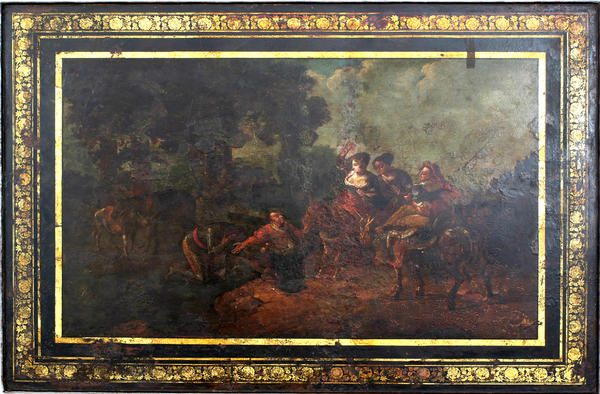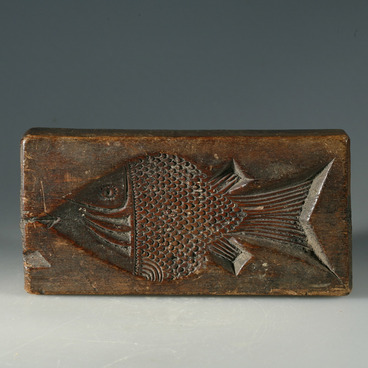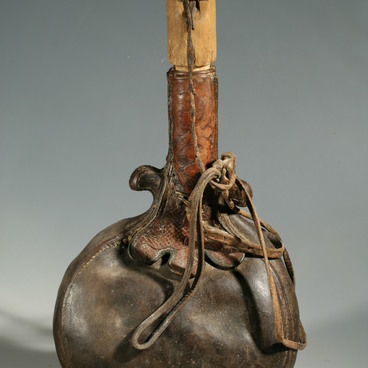This iron table was made in the first half of the 19th century at the Nizhny Tagil Iron Works. It was owned by G. Pilenko, a mining specialist who worked in the Urals. The author of the work is unknown. The table top shows an episode from Miguel de Cervantes’ novel Don Quixote.
Table with painting on metal
Creation period
19th century
Dimensions
77x168x78 cm
77х168х78 cm
77х168х78 cm
Technique
Oil on iron, gilding, silvering, painting, stencil printing, lacquering
Exhibition
1
Open in app#4
Nizhny Tagil Works
Table with painting on metal
#3
#5
In the Russian Empire of the early 19th century scenes from well-known fiction or religious texts were often used for decorating furniture, boxes and dishware. The drawing is done according to the standards of Russian academism in painting. That trend in art was born at the St. Petersburg Academy of Arts in late 18th century.
Painters who worked in that style were inspired by antiquity and Renaissance art. They followed classic examples, selected dark muted tones, and put a lot of characters on their canvases.
#6
The image was stencil printed and coated with a transparent lacquer. Thin metal plates on which images were cut out were used as stencils. The stencilled image was put on the metal surface with a big brush.
#7
Table top drawing — episode from Miguel de Cervantes’ novel Don Quixote.
#8
The Nizhny Tagil Ironworks was one of the leading factories of the Russian Empire producing high-quality metal, iron and copper. Due to ductile and tensile properties of the Ural metal, items made from it were high quality as well. The Nizhny Tagil Ironworks was founded by mine owner Akinfy Demidov in 1725. Together with the Nevyansk Ironworks, it became the centre of a special kind of painting — painting on metal surfaces.
#9
The technique of stencil painting on metal surfaces appeared in the middle of the 18th century. Its heyday is associated with the Khudoyarov artists who served at the Nizhny Tagil Works. Painter Andrey Khudoyarov and his sons decorated metal items with painting and smithing. They made paints themselves. An important role in decorating furniture was played by a strong but invisible lacquer with which surfaces were coated. It was so transparent that they called it crystal clear. The lacquer was used not only for decoration purposes, it also prevented the metal and the painting from potential damage.
#10
German scientist and explorer Peter Pallas visited the Urals in 1770s and was fascinated with metal painters’ art. He described one of the stencil printing techniques:
“In order to apply paint, they cut out various decorations, pictures, trees, birds, etc., <…> the cut paper is lacquered and usually gilded, from which desirable images are produced”.
#11
The table with painting on metal was added to the Museum collection in 1914. It was given to the Museum by Sophia Timhe, Directress of the Ekaterinburg Gymnasium and a member of the Urals Society of Amateurs of Natural Sciences. The table arrived in a poor condition — the painting could hardly be seen. Restoration of the exhibit lasted from 2010 to 2015.
#12
O.E. Kler Sverdlovsk Regional Ethnography Museum
read morehide
00:00
00:00
1x
Table with painting on metal
Creation period
19th century
Dimensions
77x168x78 cm
77х168х78 cm
77х168х78 cm
Technique
Oil on iron, gilding, silvering, painting, stencil printing, lacquering
Exhibition
1
Open in app
Share


